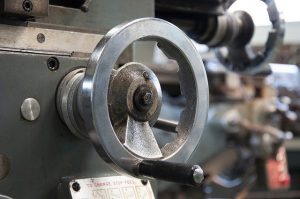
Joints are found in all types of machines, produces and workpieces. When two or more surfaces are joined together, they form a joint. There are several different types of joints, however, one of which is a mechanical joint. Some mechanical joints are temporary, whereas others are permanent. Regardless, they are commonly found in industrial machines and equipment. But what exactly is a mechanical joint, and how do they differ from other types of joints?
Overview of Mechanical Joint
A mechanical joint, as the name suggests, is a type of joint that connects or more mechanical surfaces. Machines such as lathes and milling machines often contain hundreds — sometimes even thousands — of individual moving parts. In areas where these components meet, a mechanical joint may be used. The defining characteristic of mechanical joints is that they are used exclusively to connect multiple mechanical parts.
Mechanical joints typically allow a limited range of movement, which is essential to their operation. Mechanical parts, of course, are designed to move. As a result, they must be joined in a manner that allows them to move. If they are joined with a fixed joint, the parts may seize or lock up. Mechanical joints allow mechanical parts to move as intended while keeping them connected at all times.
Types of Mechanical Joints
All mechanical joints are characterized by their use with mechanical parts. With that said, there are many different types of mechanical joints. A knuckle joint, for instance, is a type of mechanical joint that’s used to join rods. Knuckle joints contain three main components: an eye, a fork and a knuckle pin. With these components, it’s able to safely and securely join rods.
Another common type of mechanical joint is a turnbuckle. Turnbuckles are used to join mechanical components that are exposed to high tensile stress. They consist of a nut and tie rod, which are used to join the stress-exposed mechanical components.
Common Causes of Failure in Mechanical Joints
While mechanical joints are typically stronger than other types of joints, they aren’t immune to failure. Mechanical joints may fail if the pin breaks under pressure. Many mechanical joints, including knuckle joints, contain a pin. Unfortunately, these pins are generally small and thin, so they are susceptible to damage when exposed to pressure. If the pin breaks, the mechanical joint may fail to hold the respective components together.
Mechanical joints can also fail due to improper installation. Clearances must be precise to ensure the proper movement between the connected components. Otherwise, excess vibrations may occur that damage either the mechanical joint or its connected components.
No tags for this post.